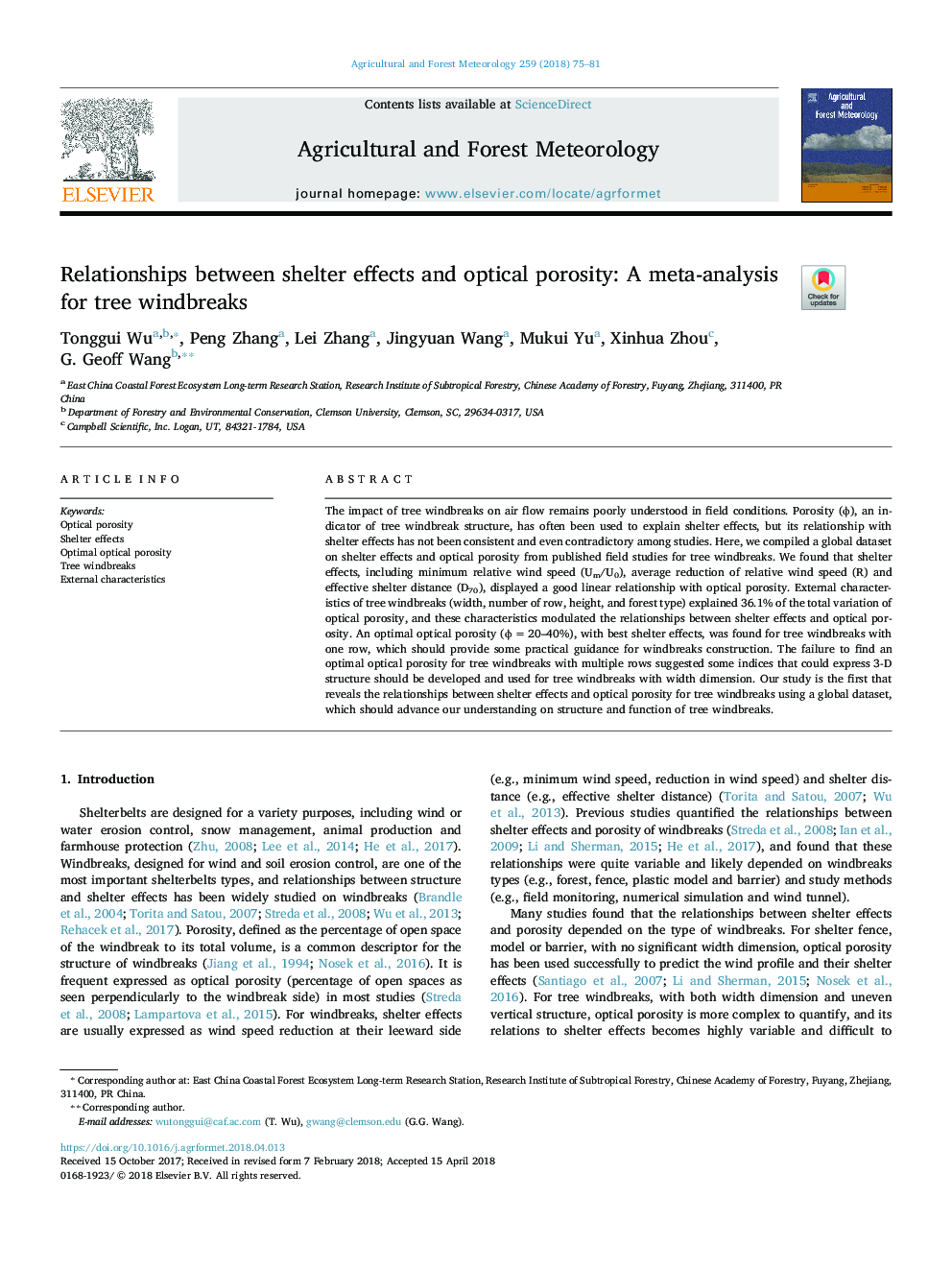| Article ID | Journal | Published Year | Pages | File Type |
|---|---|---|---|---|
| 6536632 | Agricultural and Forest Meteorology | 2018 | 7 Pages |
Abstract
The impact of tree windbreaks on air flow remains poorly understood in field conditions. Porosity (Ï), an indicator of tree windbreak structure, has often been used to explain shelter effects, but its relationship with shelter effects has not been consistent and even contradictory among studies. Here, we compiled a global dataset on shelter effects and optical porosity from published field studies for tree windbreaks. We found that shelter effects, including minimum relative wind speed (Um/U0), average reduction of relative wind speed (R) and effective shelter distance (D70), displayed a good linear relationship with optical porosity. External characteristics of tree windbreaks (width, number of row, height, and forest type) explained 36.1% of the total variation of optical porosity, and these characteristics modulated the relationships between shelter effects and optical porosity. An optimal optical porosity (Ïâ¯=â¯20-40%), with best shelter effects, was found for tree windbreaks with one row, which should provide some practical guidance for windbreaks construction. The failure to find an optimal optical porosity for tree windbreaks with multiple rows suggested some indices that could express 3-D structure should be developed and used for tree windbreaks with width dimension. Our study is the first that reveals the relationships between shelter effects and optical porosity for tree windbreaks using a global dataset, which should advance our understanding on structure and function of tree windbreaks.
Related Topics
Physical Sciences and Engineering
Earth and Planetary Sciences
Atmospheric Science
Authors
Tonggui Wu, Peng Zhang, Lei Zhang, Jingyuan Wang, Mukui Yu, Xinhua Zhou, G. Geoff Wang,
